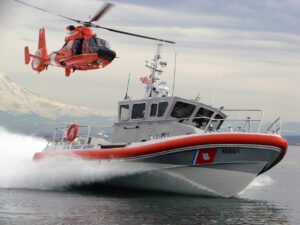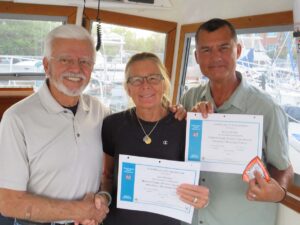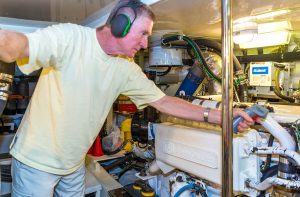Anchoring at a favorite beach for the afternoon or in a quiet cove overnight is an enjoyable way many people spend time on their boats. They use their anchoring system regularly and hopefully don’t take it for granted. Anchoring out, however, is not for everyone. Probably an equal number of boaters happily go from marina to marina, never lowering their anchor in the water and often have no idea about their anchoring system’s condition or understand its importance.
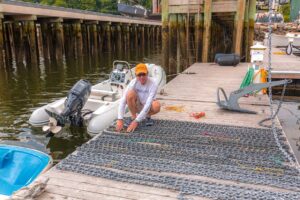
How crucial is the park feature on your car’s transmission or the emergency brake? Imagine stopping your car but not being able to hold it where you stop it. Once a boat is free from a pier or mooring, the only way to hold its position in the water is with the anchor. It would be inconceivable to drive a car with a transmission you couldn’t put in park, yet countless boaters go out every day, unwittingly doing just that with a non-working or faulty anchoring system. If you happen to be a boater who uses your anchor infrequently, you may not be aware of the risk you’re taking.
My friend Matt appreciated having a working anchoring system when he lost his boat’s transmission while waiting for a draw bridge to open. The current and wind were taking the boat toward the bridge at a swift rate. With no way to put the boat’s engine in gear, he was going to hit the bridge if he didn’t act fast. He quickly lowered his anchor and stopped the boat before colliding with the bridge.
Anchoring systems require more attention and maintenance than most boaters give them. More than just a chain and anchor, your anchoring system consists of numerous components, each one serving a critical roll. Your $2,000 stainless anchor may be wonderful, but a $10 shackle can cause everything to fail. Proper maintenance includes inspecting not only the anchor and rode, but also the shackles, swivels, cleats and windlass — every component that’s part of the system. As a whole, the system is only as good as its weakest link.
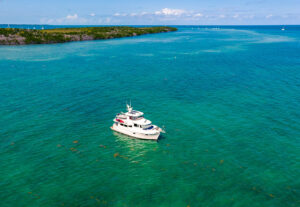
Whether you anchor regularly or infrequently, once a year pull all of your rode out onto a pier for a thorough examination. Your anchor rode will be either all chain or a combination of nylon rope and chain. For combination rode, inspect the nylon portion from end to end, looking for signs of wear, damage from abrasion or cut strands. Pay particular attention to spliced ends and thimbles where the nylon rode joins the chain.
Over time, nylon rope can shrink, which has an exaggerated effect at the splice ends. If no thimble is between the nylon and chain, as the splice repeatedly gets wet and dries out, the rope will tighten on the first link of chain and become inflexible.
Chain may seem indestructible, but it is not; nor is it maintenance-free. The chain end of a combination rode or a rode of all chain needs to be inspected thoroughly as well. Rinse the chain with fresh water to remove mud or debris. The galvanized coating on the chain has a life, so look for any signs of red rust where the galvanizing has been removed. If your chain is of sufficient length and you typically only expose a portion of the chain to saltwater, the chain can be rotated end for end, so the better galvanized portion is used. This can be alternated for several years to extend its useful life span.
Whether you have a combination rode of nylon and chain or all chain, each will utilize a shackle and or swivel to attach the chain to the anchor. The use of a swivel between the chain and anchor is a controversial subject I’ll avoid in this piece. If you use one, it needs to be inspected and maintained along with the other components. The clevis pin securing the shackle or swivel is a weak link in the assembly. Make sure it is fully threaded into place and is seized with a piece of stainless or Monel mousing wire.
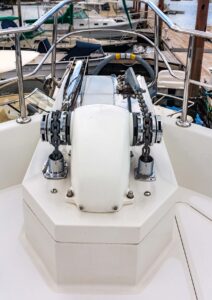
Many swivel manufacturers will also recommend thread-lock fluid for clevis pin threads. Do not use wire-ties to secure the pin, since not all wire-ties are UV stable, and they are less durable than wire mousing. With the rode laid out on the pier, now is also a good time to renew any markers used to count lengths of rode.
While the anchor locker is empty, rinse and clean the locker to remove any mud or debris. Inspect the locker drain to insure it is open and free to drain without restriction. Inspect the point of attachment where the rode is secured to the boat. All chain rode should not be shackled directly to the boat. A length of nylon rode should be in between the chain and the boat. This allows you to cut the line in an emergency where you needed to free the boat from both the chain and the anchor.
For medium to large boats with heavy anchors, the windlass is as important as your ground tackle. Whether electric or hydraulic, the windlass motor and associated components require regular attention. Every windlass is different, so before performing maintenance, consult the owner’s manual for your particular brand and model. Following the manufacture’s instructions, disassemble the chainwheel and clutch system and lubricate all moving parts and fasteners with the recommended grease. Be sure to clean any excess grease from where the surfaces of the clutch and the chainwheel meet.
Inspect all electrical connections to make sure they are tight and free of corrosion. This should include the connections at the windlass motor, the solenoid control box, and footswitches or receptacles for wired remote controls. Many of these connections are out of sight but could be exposed to spray and moisture from the wet rope and chain as it recoils back into the anchor locker.
For hydraulic windlass motors, inspect all hydraulic connections for leaks and corroded fittings. One of the best ways to keep your windlass in good condition is to keep it covered when not in use. Protecting the mechanism from the corrosive salt water environment will add years to its life.
Your anchor and associated components are exposed to some of the harshest conditions of any part of your boat. They stay out in all types of weather and get dragged around a muddy, rocky and often debris littered ocean floor. A little tender loving care and attention will provide for peaceful nights if you enjoy anchoring out frequently, and will insure your anchor is ready in an emergency should you need it.


